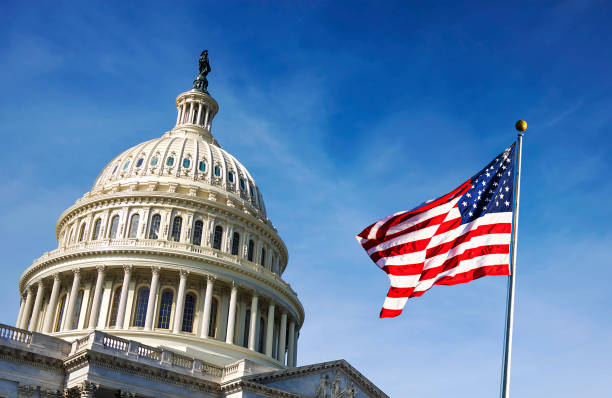
Avoid Tapping Retirement Savings This Holiday Season
Does your plan meet all your retirement needs? Schedule an appointment now with one of our advisors for a complimentary review of your retirement plan.

Does your plan meet all your retirement needs? Schedule an appointment now with one of our advisors for a complimentary review of your retirement plan.

Does your plan meet all your retirement needs? Schedule an appointment now with one of our advisors for a complimentary review of your retirement plan.

During his run for President, President Elect Joe Biden released a 110 page document to shade more light of his economic plan and the implications it has on retirement. So, what does the next 4 years look like for the impact it has on several factors such as the tax code, savings for retirement as well as social security.
TAX POLICY
Joe Biden’s tax policy plan with regards to retirement involves increment of taxes on the wealthy in a bid to raise revenue. These taxes could be raised from 37%-39.6%. Capital gainers especially those in the stock markets and real estate could also have their tax rates increased. Capital gainers that make about one million dollars in profit, could have their tax rates increased from the current 20 percent to about 39.6 percent which is almost double.
Doing this could help a lot with your retirement savings. This is so because withdrawals for IRA and 401(K) are not subjected to taxes for capital gains. Instead, they are only subjected to regular income taxations.
If you are making an income of a million dollars and have retirement investments that are non-qualified, then you may need to make changes.One way to achieve this is by delaying any withdrawals until when you stop working.
SOCIAL SECURITY
The American social security was in question during the campaign, with experts stating that it might not go beyond 2035. Because of this, President Elect Joe Biden’s policy has put in place measures that will at least work to ensure that it lasts longer and get back on track. Biden plans on doing this using the approaches discussed below:
Expansion of Social Security Benefits
• This plan involves new benefits which is minimum for people who have worked for 30 years. These will be subjected to a poverty level of about 125%.
• The second way the social security benefits will be expanded is using monthly increased benefits for some retirees.
• A 20% increment is also expected for widows and widowers.
• Older retirees are also set to benefit by receiving an increment to cover for their health costs and savings that have gotten depleted. This however applies only to retirees who have at least 20 years of receiving the benefits for social security.
Terminating any kind of social cuts
• The Biden plan will work on doing away with any cuts in social security. This includes cases where the retirement age was raised and only Americans of low income were getting benefits from the program.
• Biden also plans on making it unlawful to repay the loans for federal students using the income from social security.
iii) The “donut-hole” Approach
• Here, Biden plans on subjecting the highest earners to increased taxes.
• For now, only $137,700 of the annual earnings for employees are subjected to taxes for security payroll.
• In Biden’s new plan, earnings that will be exempt from taxes related to social security will be between $137,000 and $400,000. What this means therefore is that any earnings beyond $400,000 will be taxed.
RETIREMENT SAVINGS
Despite the fact that Biden has put every measure in place to ensure that the social security is expanded and more stable, his plan also reiterates on the importance of making savings either in the IRA OR 401(K).He plans to encourage savings through the following measures…
Creating incentives for Employees and their Employers
• About 40% of the US Economy is accounted for by businesses that are small. These businesses are often quite reluctant about giving their employees benefits for retirement, citing costs and other administrative issues.
• Through the SECURE Act plan therefore, the Biden plans on giving small businesses more tax breaks. This is in a bid to help them organize for a retirement plan for their employees so that they can invest more on their future.
• The Biden plan also called for automatic 401(K) to encourage making savings especially for the employees who are not attached to any sponsored employer plans.
Contributions of Caregivers
• Deferrals of up to a particular amount in one’s account for retirement are often allowed by the current law.
• For instance, the limit for contribution for 401 (K) for this year, 2020 is $19,500.
• Sometimes however, unavoidable circumstances may subject an individual to go for temporary leave.
• During that window period, they may thus be unable to make contributions to the required amounts.
• The Biden plan takes care of such individuals by offering them a chance to bridge the gap when they get back to the workforce. This is achieved by ensuring that their limits for annual contributions are raised, hence enabling them to catch-up comfortably.
401(K) Tax Benefit Equalization
• The Biden plan allows for anyone with deferrals for tax 401(K) to use contributions from pre-tax to rapidly grow their accounts. When it comes to such an individual’s time to retire, they shall use these taxes which will depend mostly on their annual earnings at the given time.
• Biden’s team also worked to ensure that the tax benefits for those with 401(K) accounts are equalized.
• The plan also proposes using a flat tax credit. This will be a major relief especially because the contributions for retirements are tax-deductible. When you file your returns therefore, they will not be considered as income that is taxable.
• The Biden plan will work to ensure that your taxable income is not inclusive of any other tax credits. What this means is that irrespective of the fact that your full salary will be taxed, your tax bill will be exclusively dependent on the contribution you have in your 401(K) account.
Does your plan meet all your retirement needs? Schedule an appointment now with one of our advisors for a complimentary review of your retirement plan.

Older Americans on Medicare have become the focus of criminals. According to government officials, they are now utilizing various fraud schemes associated with the coronavirus pandemic. The common goal of these criminals is to get an older person’s money or Medicare number. In recent months, the Department of Health and Human Services Office of Inspector General has received over 1,400 fraud complaints associated with Covid-19. The office also acknowledges that many frauds often go unreported. This is because the victims are too embarrassed or they may not know how or where to report what happened to them.
There are two things older Americans need to remember to avoid being ripped off.
*Medicare does not contact its clients and ask them for their Medicare number. It already has their Medicare number. They won’t ask for any other sensitive information like a credit card number.
*Medicare won’t contact a client out of the blue with a social media post, text message, phone call, or email. Any unsolicited communications from Medicare is a sign of a scammer.
It is recommended for individuals to have a script near their phone. This is an important tool that can be used to shut down scammers. It could be a simple statement that a person doesn’t give out their personal information to any type of unsolicited call. Should the caller claim to be from a doctor’s office, a person should contact their doctor’s office with a phone number they know is real.
Older Americans need to realize that Medicare works in many ways like a private-sector insurer. It will commonly contact its clients by mail. If a person has not initiated contact with a Medicare representative, they should realize that getting a random phone call from Medicare just won’t happen. If anyone believes they are experiencing Medicare fraud involving Covid-19 they can report it online. They can also call 800-447-8477.
Data that someone can use to identify a person is known as Personally Identifiable Information (PII). This includes such things as email addresses, Social Security numbers, financial account numbers, driver’s license numbers, and more. One of the most effective ways to avoid being scammed when contacted by a person claiming to be from Medicare is to hang up on them.
There are various scams associated with Covid-19 that focus on older Americans.
*Facebook Accounts – Older Americans are having their Facebook accounts hijacked. When this is done, another person will pose as someone who has received an HHS grant because of the Covid-19 pandemic. The amounts could be up to $15,000. The HHS does issue grants but only to researchers.
*Scammers have contacted older Americans and told them they are eligible for a Covid-19 Wellness Kit. It would have face masks, hand sanitizer, and more. Some were promised a Covid-19 test kit they could use in their home. Others were offered additional Medicare coverage. All of these items came with a price and nothing was delivered.
*Scammers have gone to the home of older Americans and administered Covid-19 tests that are fake. Some have also had fake drive-through test sites. There have also been fake cures and treatments provided.
*Scammers have called and posed as hospital or medical employees. They then tell older Americans their doctor wants to test them for Covid-19. These scammers will claim to be setting up an appointment that is fake and will require a copay be given in advance by credit card.
Older Americans should be suspicious of any unexpected visitors or callers. They should never respond to a text message about Covid-19 or open any hyperlinks. On social media, any sites that provide offers or ads about Covid-19 testing should be ignored. Ignore anyone pretending to be a Covid-19 contract tracer. Real contact tracers never request a person’s financial information or Medicare number. Following these suggestions is a big step toward avoiding being scammed by a criminal.

The world of COVID-19 is, at least for the foreseeable future, the new normal of society. That means that there’s no time to slow down on retirement investing, as those same deadlines are coming up as quickly as ever. Below are some of the most important things to keep in mind during this unusual era.
With the uncertainty of the times, it does make sense that many would start thinking about what could happen with their families if a worst-case scenario was to occur. While you may not need to panic, taking the time to update your estate plan is a sensible way to deal with the current state of the world. Take a look at your current plan, determine if it makes sense for the current atmosphere, and then make the changes that will help you to feel the most comfortable going forward.
The IRS has once again increased the amount of money you can put into your retirement account each year, with the total contribution limit raised to $19,500 (insert hyperlink https://www.irs.gov/newsroom/401k-contribution-limit-increases-to-19500-for-2020-catch-up-limit-rises-to-6500) for 2020. This may only be an increase of five hundred dollars for the year, but it’s a good reminder to invest money in your retirement while you have the ability to do so. Things are less certain than ever before, so funding your retirement account while you’re still financially stable simply makes sense.
Not only can you fund your retirement more easily than ever before, but you may now avoid some of the required distributions that may have been required of you. If you can afford to avoid the distribution, try to let your money go to work for as long as you can. Keeping your money in your retirement account is going to allow you to keep it safer for a long period of time, which should in turn allow you to get more from your overall retirement investments. Now that you’ve got the choice, you can keep your money working instead of pulling it out.
While putting your money to work makes sense, it’s important to remember that the markets are poised to be quite volatile. As such, it would be wise to avoid taking those steps that would lead to reducing your current investing power if at all possible. Don’t pull money out of the market right now if you can help it – you may not be able to replace it as quickly as you might like. Though you should make the market moves that make the most sense for your situation, you should also be prepared for things to get a bit less certain than they may have been in years past.
Finally, try to remember that a huge part of retirement planning today still involves working with professionals. If at all possible, try to meet with your various advisors remotely to help reduce the odds of contracting the virus and to adhere to your area’s social distancing requirements. While meeting virtually may feel unusual, it’s vital that you don’t let your accounts go without management. Virtual meetings will give you a chance to ensure that your retirement plans remain on the path that you’d discussed before COVID-19.
COVID-19 has derailed many plans but it doesn’t have to derail your retirement. Continue to invest wisely, take advantage of new rules and regulations, and work with your advisor to ensure that you are on the right path. With the right guidance and attitude, you can adapt to this new normal.

This year has been quite an adventure for people who need to file and pay taxes. COVID-19’s impact on the economy led to the delaying of the income tax filing date as well as the passing of the CARES Act, or what’s otherwise known as the COVID-19 Stimulus. If you met the eligibility requirements set forth by Congress and the Treasury Department, you received a payment from the government for the amount you qualified for.
Many people may have questions about whether receiving stimulus payments will mean a lower amount in their tax return, or a higher amount in taxes owed. But it may be especially worrisome for those who are currently receiving social security benefits because they have an additional source of income and filing procedures to deal with. Here’s what you should know about how stimulus payments will affect how you file taxes.
Who Gets Stimulus Payments?
Stimulus payments are intended to go to tax payers who have either already filed, or who will file taxes for the years 2018 and 2019. Note that social security beneficiaries are also included in this group. You qualify for $1,200 if you filed individually and your annual income is $75,000 or less, and $2,400 if you filed jointly with your spouse and your combined annual income is $150,000 or less. If you have any children under age 17 who you claimed as dependents, you get an additional $500 per child. If you filed as a head of household, your income can be as high as $115,000 to get the $1,200 payments as well as the $500 per qualifying child.
You will not get a stimulus payment if you have an annual income of $99,000 or more when filing as an individual, $136,500 or more when filing as a head of household, or $198,000 when filing jointly. You also cannot get one if you’re classified as a dependent, don’t satisfy the requirement in the IRS’s non-filer tool, or are a non-resident alien. Bear in mind though that payments are received much quicker if you met the April 15 deadline for direct deposit of your payment, because otherwise receiving it via check in the mail could take months.
How Social Security Benefits Affect Receiving Stimulus Payments
Those who have been receiving social security benefits since before January 1 of this year, and who do not regularly file federal income taxes automatically receive stimulus payments. Those who started receiving them after January 1 of this year, and who didn’t file tax returns for 2018 or 2019 will need to use the non-filer tool to make sure they get their payments. If you used the non-filer tool to enter information about dependents qualifying for the $500 payments after the set deadline, you will have to wait until next year to get those payments.
Social Security Benefits Tax And The Stimulus
One thing to be clear on is that a stimulus payment is NOT considered income according to the IRS. You simply report it as a tax refund credit on next year’s tax form, but your tax owed or refund amount for the year 2020 will not be affected. If you’re a social security beneficiary, your stimulus payment will also not affect your provisional income amount which affects how much you owe in social security benefits taxes. Your provisional income is an amount that’s calculated taking your AGI calculated without student loan interest deductions or tuition fee deductions, adding any tax-free interest your investments such as 401k’s or IRAs have earned, and adding all of that to 50% of the current amount of your social security benefits.
If your provisional income is $25,000 or less and you’re a single tax filers, or $32,000 or less and a joint tax filer, you owe nothing on benefits taxes. You will owe up to 50% in benefits taxes if you’re a single tax payer whose provisional income is between $25,000 and $34,000, or a joint filer whose income is between $32,000 and $44,000. Any provisional income over $34,000 as a single filer or $44,000 as a joint filer will subject you to an 85% tax on your social security benefits. However, if you received a stimulus payment, it will not move your provisional income from one tax bracket to another, and as such you will not have to worry about seeing your benefits decrease.
Does your plan meet all your retirement needs? Schedule an appointment now with one of our advisors for a complimentary review of your retirement plan.